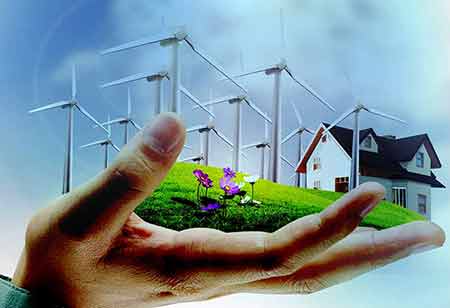Thank you for Subscribing to Energy Business Review Weekly Brief
Landscape of Wind Power in Europe

By
Energy Business Review | Saturday, January 01, 2022
Stay ahead of the industry with exclusive feature stories on the top companies, expert insights and the latest news delivered straight to your inbox. Subscribe today.
Wind energy is considered to be one of the renewable energy with fewer effects on the environment compared to other renewable sources.
FREMONT, CA: Wind power is a growing renewable energy technology. Here, the wind is used to produce energy that has fewer effects on the environment, when compared with other energy sources. Wind power is mostly generated in remote areas, where wind speeds are strong. The kinetic energy of wind is utilised to produce electricity, where the motion of air is transformed into electrical energy using wind turbines or wind energy conversion systems.
The wind hits the turbine’s blades causing them to rotate and turn on the turbine connected to them. The amount of power that can be gathered from wind depends on the size of the turbine and the length of its blades. The output corresponds to the dimensions of the rotor and wind speed.
Becoming the world’s first climate-neutral continent by 2050 is the objective of the very ambitious package of measures that should enable European citizens and businesses to benefit from a sustainable green transition. The use of renewable energy has many potential benefits, including a reduction in greenhouse gas emissions, the diversification of energy supplies, and a reduced dependency on fossil fuel markets, in particular, oil and gas. The growth of renewable energy sources may also stimulate employment in the European Union, through the creation of new green technologies.
Recent statistics on the share of energy from renewable resources overall and in three consumption sectors like electricity, heating, cooling, and transport in the European Union. Renewable energy sources include wind power, solar power, thermal, photovoltaic, concentrated, hydropower, tidal power, geothermal energy, ambient heat captured by heat pumps, biofuels and the renewable part of the waste materials. To calculate the share of renewable energy in heating and cooling,
The final consumption of energy from renewable sources is defined in industry, households, services, agriculture, forestry and fisheries for heating and cooling purposes, in addition to heating produced from renewables. The total final consumption for heating and cooling is of all energy commodities, except electricity, for purposes other than transport, the consumption of heat for own use at electricity and heat plants and heat losses in networks.
Wind and water provide the most renewable electricity; solar is the fastest-growing energy source. This presents the results relying on these accounting rules. The growth in electricity generated from renewable energy sources during the period 2009 to 2019 largely reflects an expansion in three renewable energy sources across the Europe Union, principally wind power.






